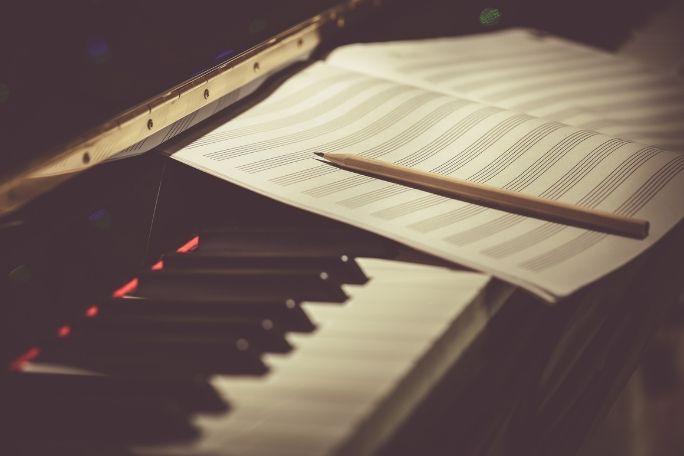Lesson summary
Retired AFL star Adam Goodes is known to many for his resilient journey in the face of detrimental treatment by AFL spectators and the media beginning in 2013.
In this lesson, students will experiment with a variety of composition techniques to create a film score for a short clip from The Final Quarter. Students consider the value of using pre-existing material, loops and melodic themes when composing for film. Students develop skills in the use of digital recording and editing software and techniques and reflect on their compositions.
Learning intentions:
Students understand...
- how to combine musical elements to create mood
- how to apply different composition techniques in film scores
- the benefit of using melodic themes in film scores
- how musical loops work
Success criteria:
Students can...
- research and select pre-existing instrumental material to create appropriate mood in a film score
- notate melodic themes
- use digital equipment to record and edit music
Lesson guides and printables
Curriculum links
Select your curriculum from the options below.
Lesson details
Curriculum mapping
Australian curriculum content descriptions:
Years 7 & 8 Music:
- Experiment with texture and timbre in sound sources using aural skills (ACAMUM092)
- Develop musical ideas, such as mood, by improvising, combining and manipulating the elements of music (ACAMUM093)
- Structure compositions by combining and manipulating the elements of music using notation (ACAMUM095)
Syllabus outcomes: MUS4.4, MUS4.7, MUS4.8
General capabilities: Literacy, Critical and Creative Thinking
Cross-curriculum priority: Aboriginal and Torres Strait Islander Histories and Cultures (OI.6, OI,9)
Relevant parts of Years 7 & 8 achievement standards:
Students identify and analyse how the elements of music are used in different styles and apply this knowledge in their performances and compositions.
Students manipulate the elements of music and stylistic conventions to compose music. They interpret, rehearse and perform songs and instrumental pieces in unison and in parts, demonstrating technical and expressive skills. They use aural skills, music terminology and symbols to recognise, memorise and notate features, such as melodic patterns in music they perform and compose.
This lesson is part of the wider unit of work: The Final Quarter – Composing For Film – Music – Years 7-10
Time required: 100 mins
Level of teacher scaffolding: High – support students with activities and the use of relevant software, applications or instruments
Resources required
- Device capable of presenting a video to the class
- Equipment capable of recording and editing sound and music files
- Selection of sound loops and/or applications (see lesson preparation notes)
- Student Worksheets – one copy per student
Skills
This lesson is designed to build students’ competencies in the following skills:
- Communication
- Collaboration
- Creativity
- Critical thinking
- Digital literacy
- Problem solving
Additional info
Using only archival footage aired at the time, The Final Quarter holds a mirror to Australia and is an opportunity to reconsider what happened on and off the football field. Learn more about the film here.
We highly recommend that students view the film in its entirety before participating in subsequent lessons.
Our Watching the Film lessons are designed to support you in facilitating this process. Given the content, it is also important for teachers to communicate with parents and guardians of Aboriginal and Torres Strait Islander students before playing the film and/or engaging with the teaching and learning resources.
Note: This film may not be suitable for viewing by all young people. Teachers are advised to use their discretion when deciding whether to show this film. If teaching in a context with a high proportion of Aboriginal and Torres Strait Islander children, it is imperative that guidance is sought from the Principal and Aboriginal Education Officer (or equivalent) prior to screening the film.


Welcome back!
Don't have an account yet?
Log in with:
Create your free Cool.org account.
Many of our resources are free, with an option to upgrade to Cool+ for premium content.
Already have an account?
Sign up with:
By signing up you accept Cool.org's Terms and Conditions(Opens in new tab) and Privacy Policy(Opens in new tab).